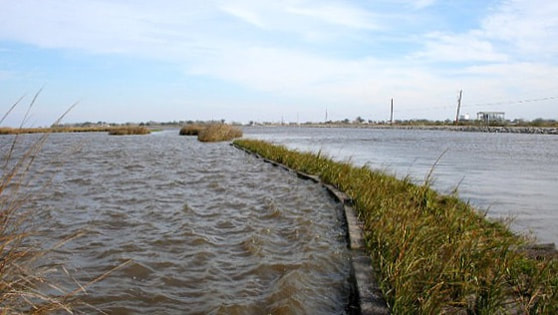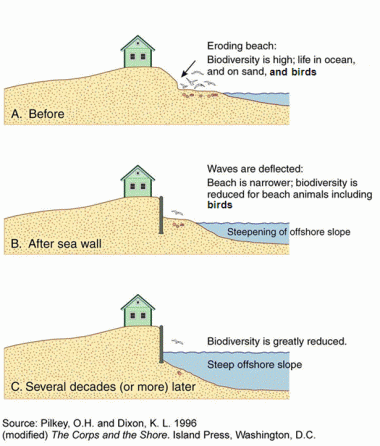Shore Protect Team Things To Know Before You Buy
Table of ContentsThe Shore Protect Team IdeasA Biased View of Shore Protect TeamWhat Does Shore Protect Team Mean?Some Known Details About Shore Protect Team Everything about Shore Protect TeamShore Protect Team Fundamentals Explained6 Easy Facts About Shore Protect Team Explained
Decrease in home worth: As the area tourist is influenced by disintegration, so then is the economic situation. Purchasers are much less most likely to look for a beach house that might be damaged at any type of minute by the impending flooding and erosion emergency. Subsequently, building value can drop tremendously and influence the entire area.Whether a beach is just tiny and crowded or has to close totally for the safety and security of the environment and neighboring buildings, this significantly impacts tourist. Subsequently, neighborhood economies are impacted (https://www.bizthistown.com/united-states/katy/construction-engineering/shore-protect-team). Risk of injury: The boosted threat of flooding and structural failures causes a boosted threat of injury to nearby travelers and area participants

is home to more than 84,240 miles of coast with 41% of it revealed to the open sea. Coastal designers supervise of securing the shore versus changes by lessening the destructive influences of both natural and man-made occurrences. Shoreline stablizing is directly associated to their work. Waterfront hotels: Since coastline erosion impacts tourism, it impacts the success of waterfront resorts.
The Basic Principles Of Shore Protect Team
This eventually causes closures and deserted beachfront buildings. Coastal business businesses: No travelers indicates no company. For those companies dealing with citizens, their home is at danger of damage from erosion and flooding. Coastal state parks: State parks that exist along coastlines are at threat of damages. Not just to the manmade structures and homes on website, however additionally to the natural communities that exist within.
Soft stablizing is a much better option for the atmosphere and more sustainable overall. Difficult stablizing makes use of man-made structures as defense to manage erosion. Normally, these structures are mounted at right angles or parallel to stop sand motion and decrease the pressure of waves. Many types of hard stabilization like seawalls and sheet metal are not optimal for shoreline stabilization.
Shore Protect Team Things To Know Before You Get This
There's also not adequate evidence of their performance depending upon the sort of coastline and local problems. Hard stablizing techniques often tend to be harder to mount and don't match the all-natural aesthetic, protruding like a sore thumb and hurting local ecological communities in many situations. Coastline nutrients is the process of adding shed sand and sediment back to beaches after disintegration has happened.
TrapBags aid in the process of coastline nutrients by protecting natural ecosystems and enabling plants to expand. While this process can be costly and is not long-term, the pros tend to exceed the disadvantages. TrapBag obstacles deal lots of residential or commercial properties that make them suitable for coastal and shore disintegration protection. They're: Eco friendly: You can utilize indigenous dirt both to surround and to fill the TrapBags.

Excitement About Shore Protect Team
They can additionally be installed without any hefty machinery. Budget friendly: TrapBags are optimal for both small and big areas of shoreline.
Integrated with a high building and construction expense, this has actually brought about boosting usage of other soft design seaside administration options such as coastline replenishment. Seawalls are created from numerous products, a lot of frequently reinforced concrete, boulders, steel, or gabions. Various other possible building products consist of plastic, timber, light weight aluminum, fiberglass composite, and eco-friendly sandbags constructed from hemp and coir. The suitable seawall design depends on location-specific aspects, consisting of surrounding disintegration procedures. There are three primary kinds of seawalls: upright, bent, stepped, and mounds (see table listed below). A record released by the United Nations Setting Programme (UNEP) suggests that the tsunami of 26 December 2004 triggered much less damage in the areas where natural obstacles existed, such as mangroves, reef or seaside plant life.
Natural barriers, such as coral reefs and mangrove forests, stop the spread of tsunamis and the circulation of seaside waters and alleviated the flooding and rise of water. A cost-benefit method is an effective way to establish whether a seawall is appropriate and whether the benefits are worth the expense.
Shore Protect Team Fundamentals Explained
A seawall is a static feature which can conflict with the vibrant nature of the coastline and hinder the exchange of sediment in between land and sea. The table below sums up some positive and unfavorable effects of seawalls which can be used when comparing their effectiveness with other coastal monitoring alternatives, such as beach nutrients. [] Advantages and drawbacks of seawalls according to Short (1999) Benefits Disadvantages Lengthy term remedy in contrast to soft beach sustenance.

This can cause coastlines to dissipate, making them useless for coastline goers. Generally, seawalls can be a successful way to manage seaside erosion, yet only if they are built well and out of products that can endure the pressure of recurring wave energy. Some understanding is needed of the seaside procedures and morphodynamics specific to the seawall area.
The 4-Minute Rule for Shore Protect Team
Integrated with a high construction expense, this has caused enhancing use other soft engineering coastal monitoring choices such as beach replenishment. Seawalls are built from different products, the majority of commonly reinforced concrete, stones, steel, or gabions. Various other feasible construction materials include vinyl, wood, aluminum, fiberglass composite, and naturally degradable sandbags made of hemp and coir. The appropriate seawall style depends on location-specific aspects, consisting of bordering disintegration procedures. There are 3 major types of seawalls: vertical, bent, stepped, and mounds (see table below).
All-natural obstacles, such as coral reefs and mangrove forests, prevent the spread of tsunamis and the circulation of seaside waters and alleviated the flooding and rise of water. A cost-benefit method is a reliable method to determine whether a seawall is appropriate and whether the advantages are worth the expense.
Some Known Details About Shore Protect Team
A seawall is a fixed attribute which can contravene the dynamic nature of the coastline and impede the exchange of sediment between land and sea. The table below sums up some favorable and unfavorable results of seawalls which can be made use of when contrasting their efficiency with other seaside monitoring alternatives, such as coastline nutrition. [] Advantages and drawbacks of seawalls according to Short (1999) Advantages Negative aspects Long term option in contrast to soft coastline nutrition. seawall installation.

This can cause coastlines to dissipate, making them worthless for beach goers. Usually, seawalls can be an effective means to control seaside erosion, yet just if they are constructed well and out of products that can stand up to the pressure of continuous wave power. Some understanding is required of the coastal processes and morphodynamics specific to the seawall area.